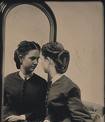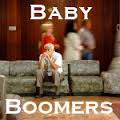| Next | Previous | Index | Tellout Home |
3. Twelve Canadian Tribes
Baby Boomers
 In his groundbreaking book, "Sex in the Snow - Canadian Social Values at the End of the Millennium," the Canadian pollster, Michael Adams, identifies twelve Tribes in the Canadian population together with their characteristics. There are three broad categories.✞
In his groundbreaking book, "Sex in the Snow - Canadian Social Values at the End of the Millennium," the Canadian pollster, Michael Adams, identifies twelve Tribes in the Canadian population together with their characteristics. There are three broad categories.✞
Different Characteristics
 They are the Elders, The Baby Boomers, and Generation X. Added to this are the more recent Generation Y and the Millennium groups. Different characteristics define these groups of people. They are broadly the same in other Western countries like the United States and Britain, except that they occur at different times because of the variation of the dates for the beginning of the Baby Boom Generation. The Baby Boomers are hugely influential because of their vast numbers of about 10 million people in the Canadian population.✞
They are the Elders, The Baby Boomers, and Generation X. Added to this are the more recent Generation Y and the Millennium groups. Different characteristics define these groups of people. They are broadly the same in other Western countries like the United States and Britain, except that they occur at different times because of the variation of the dates for the beginning of the Baby Boom Generation. The Baby Boomers are hugely influential because of their vast numbers of about 10 million people in the Canadian population.✞
Sales Target
 Because of the size of Baby Boomers, television commercials and advertisements focuses on them, and they determine the size of the educational system. Once the Baby Boomers complete school, many schools close down or amalgamate because of the lack of new students, and large schools are no longer needed. These three groupings are present in Canada as twelve Tribal Groups. As I reflect on each tribe's characteristics, I could not help but think about various friends and acquaintances who fit each one's model. I believe the author has correctly identified these Twelve Tribes in the Canadian population.✞
Because of the size of Baby Boomers, television commercials and advertisements focuses on them, and they determine the size of the educational system. Once the Baby Boomers complete school, many schools close down or amalgamate because of the lack of new students, and large schools are no longer needed. These three groupings are present in Canada as twelve Tribal Groups. As I reflect on each tribe's characteristics, I could not help but think about various friends and acquaintances who fit each one's model. I believe the author has correctly identified these Twelve Tribes in the Canadian population.✞
Not Individualistic
 There are three tribes of Elders, four tribes of Baby Boomers, and five tribes of Generation X-ers. These tribal groups prove that we are not as individualistic as we would like to think we are. Of the three "Elder" tribes presently over seventy-five years of age, two are described as "religious" and "supportive of the institution of the church." These are the leaders, power holders, and financial supporters of most Churches in the United States, Britain, and Canada. Church leaders and supporters are currently aging and passing away.✞
There are three tribes of Elders, four tribes of Baby Boomers, and five tribes of Generation X-ers. These tribal groups prove that we are not as individualistic as we would like to think we are. Of the three "Elder" tribes presently over seventy-five years of age, two are described as "religious" and "supportive of the institution of the church." These are the leaders, power holders, and financial supporters of most Churches in the United States, Britain, and Canada. Church leaders and supporters are currently aging and passing away.✞
Religious and Supportive
 The third tribe, called the "Cosmopolitan Modernists," does not have the same characteristic of "religiosity." Not a single one of the nine other tribes have religious features, nor do they support religious institutions. This group is a massive challenge for the institutional church today and threatens its future existence.✞
The third tribe, called the "Cosmopolitan Modernists," does not have the same characteristic of "religiosity." Not a single one of the nine other tribes have religious features, nor do they support religious institutions. This group is a massive challenge for the institutional church today and threatens its future existence.✞
Canadian Church Supporters
Twelve population tribes, including the Boomers, make up the profile of the population Christmas Tree. Canadian Church supporters of the average Anglican church are predominantly Elders who are now at the end of their lives. The average Anglican congregation comprises predominantly Elders who support religious institutions, so the experts tell us. There are so few people in our churches between fifteen and sixty-six years of age because supporting the institution is not characteristic of Baby Boomers and Generation X-ers. Baby Boomers are not religious in the same way as their parents and grandparents were. We have instinctively felt this for a long time but are now discovering statistics that support this principle.✞
Toronto Diocese Crest
The four Baby Boomer Tribes now occupy most of Canada's good jobs and will soon be moving into the top positions of power. One Boomers Tribe, called the Disengaged Darwinists, are influential in Metro Toronto, particularly amongst men and blue-collar workers. Their fundamental values of "fear" and "nostalgia" would encourage us to develop a few historical churches. Comfort for their fears could be our theme. They might come looking for history, but this alone will not support a church building.✞
US Strength
 Unlike the US, where faith in institutions has remained high, and church attendance is still about 40%, Canadian supporters who were once more religious are now markedly less. Canadian church supporters will be frowned upon in the future and allowed less acknowledgment and power. When the church speaks, the media will say, "So what!" and even "Be quiet!"✞
Unlike the US, where faith in institutions has remained high, and church attendance is still about 40%, Canadian supporters who were once more religious are now markedly less. Canadian church supporters will be frowned upon in the future and allowed less acknowledgment and power. When the church speaks, the media will say, "So what!" and even "Be quiet!"✞
Twelve Population Tribes
I believe the chances of the characteristics of either the Boomers or Millenniums in the twelve population tribes changing are unlikely at best. The twelve population tribes will not alter as they get older; their values consolidate. Michael Adams writes, "I believe, beyond doubt, that we can live quite happily in a secular world of twelve population tribes. But that is not to say a world without meaning." The Boomers have high regard for family, freedom, individuality, and community and, unfortunately, lower ethical values with a decrease in such basics as truth and sexual morality.✞
Aging Church Profile
These examples of an aging church profile clearly show a heavily weighted age/sex pattern at the top and light at the bottom. Significantly, the characteristics described in the Twelve Tribes match the age/sex aging church profiles produced for Anglican parishes over recent years. In many Western countries like the United Kingdom, Canada, or the United States, the same age and sex pattern emerges. In each case, they resemble a fir tree. Going to the smaller level, surprisingly, the same phenomena appear, whether it is State or Province or County. The same applies to urban as well as rural areas. Individual towns and villages bear the same results.✞
Aging
These aging church profiles are from many different churches, large and small, rural and suburban, modern and historical, BCP and BAS, High Church, Evangelical, Protestant, Charismatic and Liberal. Over and over again, the aging church profiles were "Top Heavy," with a high percentage of persons over fifty.✞
Boomer Phrases
Critical phrases of the Boomers are:- "I did it my way,"
- "Our children are our future,"
- "Eat, drink, and be merry for tomorrow we die."
Christmas Tree Shape
The general population profile produces a Christmas Tree shape of ages and sexes, typical in Canada, the United States, and Britain. The population profile for Ontario and Toronto is also a standard "Christmas Tree" shape. Surprisingly, the lower part of the population (now called the Millenniums, though formerly Generation X and Y) is smaller than the central section (known as the Baby Boom Generation.) The upper portion of the Christmas tree indicates a less numerous "Elder" group. Only at Easter and Christmas in our surveys did the cross-section of a congregation begin to match the area's general population profiles. It is a good idea for a church to take an Age/Sex survey of a typical gathering. Young people with clipboards at the door could not down the people arriving with an approximate estimation of their age to compile your very own congregational Christmas tree.✞
"Twelve Canadian Tribes"
by Ron Meacock © 2021
| Top Page | Next | Previous |